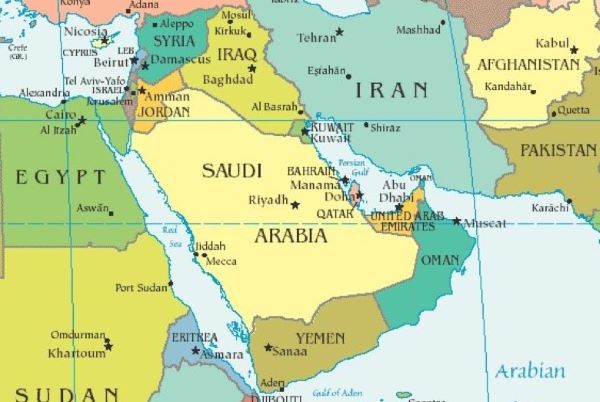~ 29 January 2024 ~
Yemen has been locked in a brutal conflict since 2014. Divided by the powers of the Houthi militia in the north and the internationally recognized government in the south, the situation has been further complicated by the outside influences of Iran, Saudi Arabia, and a coalition of neighboring countries. Similarly, Syria has also been wrapped in a civil war since 2011, with more than 310,000 deaths linked to the conflict. The Syrian conflict created the largest displacement crisis in the world, with more than 12 million people displaced in the region. As long as these conflicts were self-contained, they were independent crises. However, as Israel continues its war in Gaza and Lebanon, and as other countries including the US and UK enter the fray, many argue that the threat of regional conflict is pending.
Yemen’s conflict began when Houthi insurgents took over Sana’a, the capital and largest city in the country, demanding lower fuel prices, and a new government. The Houthis are predominantly Shite rebels with links to Iran and a history of rising against Sunni government. Following several failed negotiation attempts, the Houthis then seized the presidential palace, forcing interim president Mansour Hadi and his government to resign. Hadi fled to Saudi Arabia and for the rest of his time in power (2022), ruled in absentia.
In March 2015, a Saudi-led coalition of Gulf States launched a campaign of airstrikes and economic blockades against Yemen. The US and UK contributed billions of dollars in arms, access to intelligence, logistical support, and training, to aid in facilitating the coalition’s attacks. All sides to the conflict have violated international human rights and humanitarian law.
Humanitarian Cost
Since the start of the war in Yemen, more than 387,000 people have died; many from indirect causes such as food insecurity, lack of clean water and hygiene services, limited or no accessible health services, and from preventable diseases. Two-thirds of the population, some 21.6 million people are in dire need of assistance, including 11 million children. At least 5 million are at risk of famine and more than one million are impacted by a recurring cholera outbreak. Some 4.5 million are internally displaced.
Yemen’s economy continues to deteriorate, compounding the ongoing humanitarian crisis. An economic collapse in 2019, caused the country to splinter into two economic zones with territories controlled by the Houthis and the Saudi-led government. Yemen’s currency significantly depreciated in 2021, reducing people’s ability to pay for basic necessities. Protests erupted across southern Yemen which led to security forces’ aggressive retaliation.
Mansour Hadi, Yemen’s internationally recognized and extremely unpopular president, resigned in April 2022, after 10 years in power. He was replaced with a presidential council of seven members more representative of Yemen’s political factions. The council is chaired by Rashad al-Alimi.
US Presence in Yemen
The US is deeply invested in combating terrorism and violent extremism in Yemen and has maintained a military presence in the war-torn country since the bombing of the USS Cole in 2000. US operations are overseen by Special Operations Command Central Forward-Yemen (SFY) which oversees counterterrorism from Pakistan to Egypt. The unit has conducted airstrikes against ISIS and AQAP. Since 2002, the US has carried out more than 400 airstrikes in Yemen.
Two US drone attacks in December 2009 meant to target AQAP mistook a van filled with two families on 24 December, killing 18 people, many were children. In April 2014, twelve people were killed in a drone attack while on their way to a wedding. SFY raided an area in central Yemen in January 2017 that resulted in the death of one US service member, several AQAP rebels, and an unknown number of Yemeni civilians.
The Houthis
The Houthis were not considered US targets in Yemen. At least not until they unlawfully began firing missiles at Israel and ships in the Red Sea. The Houthis claim they are acting to support Palestine, and against Israel’s bombardment of Gaza. More than 25,000 Palestinians have been killed in Gaza, mostly women and children. The humanitarian blockade enforced by Israel is starving the people of Gaza to death. Israel’s Defense Force has used demolitions to attack hospitals, universities, and apartment buildings, and then fired on people running for their lives. Much of which is considered collective punishment and all of which are considered war crimes.
Houthi militia have continued to fire ballistic and cruise missiles at Israel since late October. The last time ballistic missiles were launched at Israel was in 1991.
Iran’s Islamic Revolutionary Guard and Lebanese Hezbollah have played a critical role in providing weapons, technology training, and other assistance to the Houthis. While many speculate that it is Iran orchestrating the Houthi actions, to say that the Houthi is Iran’s puppet, would be a mistake. Outside of support from Iran, the Houthis have been making their own decisions from the start. For example, Iran strongly advised against the capture of Sana’a, but the Houthis did it anyway.
The US and UK continue to launch airstrikes against Houthi targets in Yemen, claiming that they are protecting the “free flow of commerce” in the Red Sea.
Regional Threat
In October, there were a series of drone and rocket attacks on US military bases in eastern Syria and western Iraq. Responsibility for the attacks was claimed by the Islamic Resistance of Iraq. The previously unknown group has been linked to a coalition of extremist groups in Syria and Iraq, most likely linked through funding or otherwise, to Iran. Considered to be part of the “axis of resistance” established by Iran as a chain of proxy groups from Yemen to the Mediterranean, the proxies include Hezbollah, Hamas, and the Houthis. In retaliation, on 9 November, the US carried out airstrikes in Syria and Iraq, specifically targeting a weapons storage facility in Syria linked to Iran’s Islamic Revolutionary Guard.
A drone attack on 27 January at the logistics support base at Tower 22 in Jordan, killed three US servicemembers, and injured 40 others. The evidence supports that an Iran-backed militia is responsible for the attack. The US has promised to retaliate.
There has been grave concern that the situation between Israel and Hamas in Gaza could lead to a regional conflict. To that point, Israel’s war with Hamas in Gaza splintered into a conflict between Israel and Hezbollah in Lebanon. Outside forces have chosen sides, which opened the door for other countries to enter the conflict. An attack against US installations in Iraq, Syria, and Jordan, has led the US to strike back. The US and UK are conducting airstrikes in Yemen against Houthi militia. The Houthis are firing on ships in the Red Sea in support of the Palestinians. The threat is real… and it is already a regional conflict.
With gratitude… Lara
Photo Credit: Middle East-map by amystatton. Licensed under CC by 2.0
#thinkingoutloud #larakajs #Yemen #Gaza #regionalconflict


What happens in Yemen can exacerbate regional tensions. It is impossible to comprehend the conflict in Yemen and why it should matter to everyone, without including an understanding of the complicity of the outside influences.
Why does Yemen matter? You said it best in your book Stories from Yemen: A Diary from the Field… “Location, location, location.”
I’m learning and trying to understand the complicated issues concerning Middle East conflicts. Thank you, Lara, for sharing your knowledgeable insights through your book, Stories from Yemen, and various writings…I’m highly interested in learning about possible solutions to the complex issues threatening the lives of civilians throughout the Middleast. Two-State solution? Enforcement by the United Nations of the Geneva Convention rules of war/war crime violations?. To me, it is unacceptable what is being allowed to transpire. How can war crimes be stopped against Ukraine, Africa, Aphghanistan, Gaza?